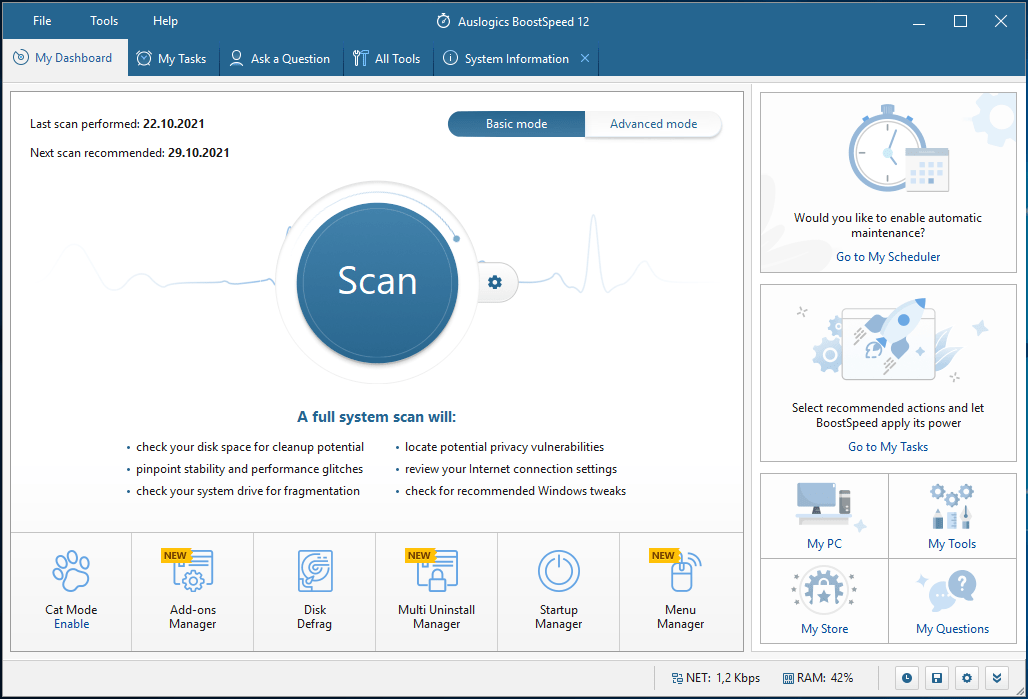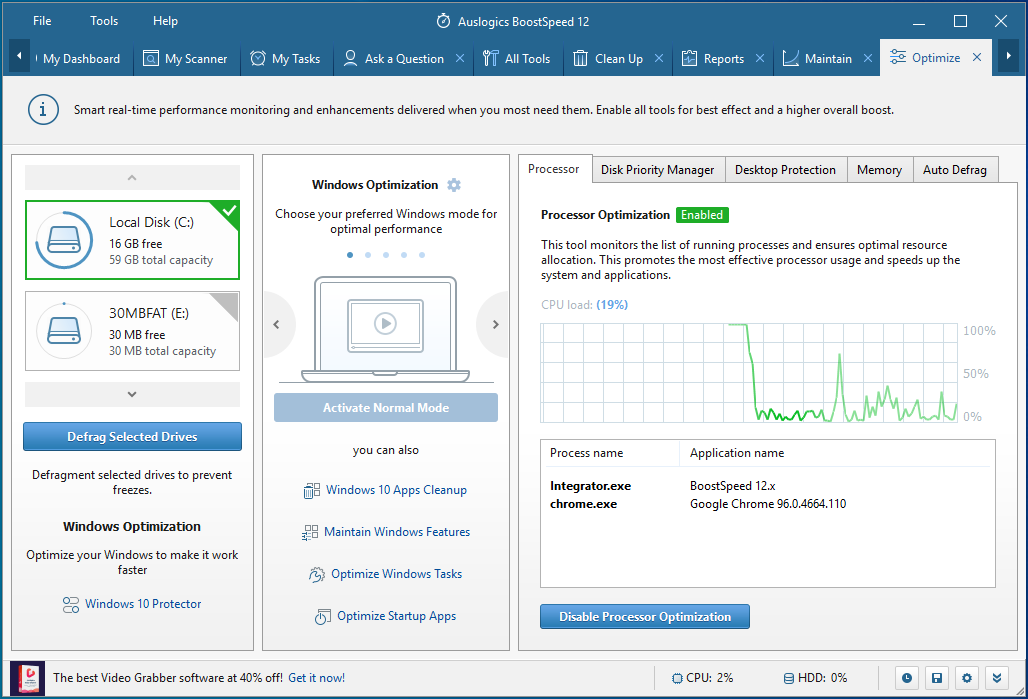
The Central Processing Unit (CPU) of a computer’s most important component. It’s essentially the brain that makes calculations and decisions about how to run every task and operation on a PC. The CPU is integral to a PC. For example, you can still use the computer without a dedicated video card, a network card, or even a sound card. However, without the processor, you merely have an expensive piece of industrial brick.
There are various ways to categorize the CPU—by manufacturer, generation, or clock speed among others. However, the most important method of classification is by how many cores they have. Using that yardstick, there are two main CPU types: the single-core CPU and the multi-core CPU.
Single-core processors are all but extinct at this time so we only have computers whose processors use between two and eight cores.
However, does it matter how many cores a processor has and how many your CPU needs? This article answers these questions. We’ll explain each type of CPU and how your choice of processor correlates to performance.
What Is a CPU Core?
A CPU is a computer’s processor chip that executes instructions fed to it by a computer program. On a Windows 10 PC, that program is the operating system. The main component of a CPU is the processing unit or core. The core is responsible for reading and executing program instructions.
If the processor is like the human brain, then the processing unit or core is like the cerebrum. It’s the part that carries out the primary functions of the CPU.
Now, just like the human cerebrum is divided into right and left portions, a CPU can have more than one processing unit. The more cores there are, the faster the tasks are carried out.
A computer with one processor core can carry out a single task at a time. Although it may perform the task very fast it must finish before it can do something else. On the other hand, multiple cores help speed up system operations because the computer treats each core as a different processor. It assigns tasks to each one simultaneously. With multiple tasks being done at the same time, both speed and performance are increased.
In the early days of the computing system, processors only had one core because of the limits of technology at that time. Nowadays, a single-core CPU is a rare thing; every consumer PC comes with at least a two-core processor.
What Do Cores Do in a CPU?
When it’s time to purchase a new computer, many users are confused about labels like “dual-core”, “quad-core,” and so on. They might wonder what cores do exactly and why the number of cores matters.
Strictly speaking, a core is equivalent to a CPU. Most modern computers have multiple cores on a processor chip. In effect, the system has more than one CPU to use at a time. The operating system distributes tasks among the cores to ensure the smooth running of computer programs. Depending on what you wish to do with your system, you probably need one with multiple cores.
How Do More Cores Affect Performance on Windows 10?
Sure, you might not mind splurging on the latest and greatest PC if you have the money. However, it might be better to tailor your purchase according to your needs.
The kind of PC you buy should be designed for the kind of programs you want to run on it. Also, remember that performance is not only dependent on hardware but software as well. Too many junk files on the hard drive, corrupted memory, and even invalid registry keys can make a PC with adequate specs perform far less than the sum of its parts. A PC cleanup utility like Auslogics BoostSpeed will help you restore the performance to the normal level.

For basic tasks like browsing, watching videos, playing music, and using basic productivity apps like Word and Excel, a computer with two or four cores might be sufficient for your needs.
For gaming and video editing, you should choose a good computer that has between four and eight cores as the increased number of cores will be better able to handle the extensive operations that gaming and graphics editing involves.
For complex workstations that require graphics rendering, you’re better off splurging on one of the specialized beasts out there with at least 12 cores. You can even find up to 64 cores for the most extreme resource-demanding tasks like 3D animation rendering and on-site network computing.
These are the common types of CPU based on the number of cores:
- Single-core CPU or processor with one core.
- Dual-core CPU or processor with 2 cores.
- Quad-core CPU or processor with 4 cores.
- Hexa-core CPU or processor with 6 cores.
- Octa-core CPU or processor with 8 cores.
- Deca-core CPU or processor with 10 cores.
- Duodeca-core CPU or processor with 12 cores.
Let’s look at each one in turn.
- Single-Core CPU
The age of microprocessors began with a one-core CPU. Even though it could only perform a single operation at a time, it was still an improvement over what came before. Nowadays, the only place to easily find a processor with one core is in a tech museum.
- Dual-Core CPU
Processor chips with two cores can be found in most entry-level computers. Examples of two-core CPUs are the Intel Core Duo and the AMD X2. They use two processors on a single chip.
Dual-core computers are very budget-friendly and allow you to do a few basic tasks at a time. You can play media files and perform simple browsing, type out documents and play old Super Mario games without overloading the CPU.
- Quad-Core CPU
A computer with four cores is good enough for regular tasks like gaming, basic video editing, and multi-productivity work. The Intel 6th and 7th generation chips are mostly quad-core.
- Hexa-Core CPU
You can find processors with six cores in many of the latest mid-range gaming and graphics editing laptops around. If you’re looking for a machine that can handily perform advanced video editing 3D rendering, and play AAA games comfortably, you can go for a hexa-core chip. However, the PC should also be paired with at least 8GB of RAM to take full advantage of the parallel processing.
- Octa-Core CPU
This type of chip is found in high-performance computers used by engineers, architects, and specialized workers that do a lot of complex graphics rendering. If you’re a professional gamer or a programmer that uses software that needs a lot of resources, an 8-core PC may be the best tool for your trade.
- Deca-Core CPU
Any computer with a 10-core chip should easily handle anything you throw at it, all other things being equal. The Intel Core i9-10850K is an example of a deca-core chip produced for gaming desktops. Playing the heaviest games at 4K, virtual reality, and advanced software mapping will be a breeze with this type of processor.
- Duodeca-Core CPU and Above
In recent times, CPUs with more and more cores are being released for the most demanding operations a computer could ever do. Examples are the AMD Ryzen 9 5900X with 12 cores, Intel Core I9-9980XE Extreme Edition with 18 cores, and AMD Ryzen Threadripper 3960X with 24 cores. These are performance monsters for deep-pocketed users looking for a specific technology.
So, More Is Better?
There is a pretty straightforward correlation between the number of cores on a PC and its optimum performance. But not always. Other factors that determine how fast a computer is.
Apart from the number of cores, you have to consider the number of threads as well. Threading is the ability to run multiple processes on a single chip at a time. Some chip makers added threading capability to their better chips to further boost performance.
So, thanks to threading capability, a quad-core computer might be able to run 8 processes at once while a hexa-core computer is limited to just six processes. In that case, the 4-core PC with threading capability is the better choice as it allows for better multitasking and enhanced performance. For the best value when shopping for a new PC, you should be on the lookout for CPUs with multithreading capability. Intel calls theirs Hyper-Threading and AMD calls theirs Simultaneous Multithreading.
The CPU’s clock speed is another factor to consider. Clock speed is the rate at which the processor operates, defined as the completion of one processing cycle and measured in gigahertz.
A general rule of thumb with clock speeds: higher is better.
Of course, the storage and RAM affect the speed of the processor as well. For the best results, you should go for a computer that pairs a good CPU with a fast SSD and at least a DDR4 memory.
We hope this article has increased your knowledge of computer processors. With this, you’ll go into your next PC purchase better informed. Given that PCs with 8 cores and above aren’t exactly cheap, you may need several rounds of saving to get what you want. In the meantime, you can use the Optimize Tool in Auslogics BoostSpeed to finetune your current PC for the best performance.





 Done! Great to see you among our subscribers!
Done! Great to see you among our subscribers!